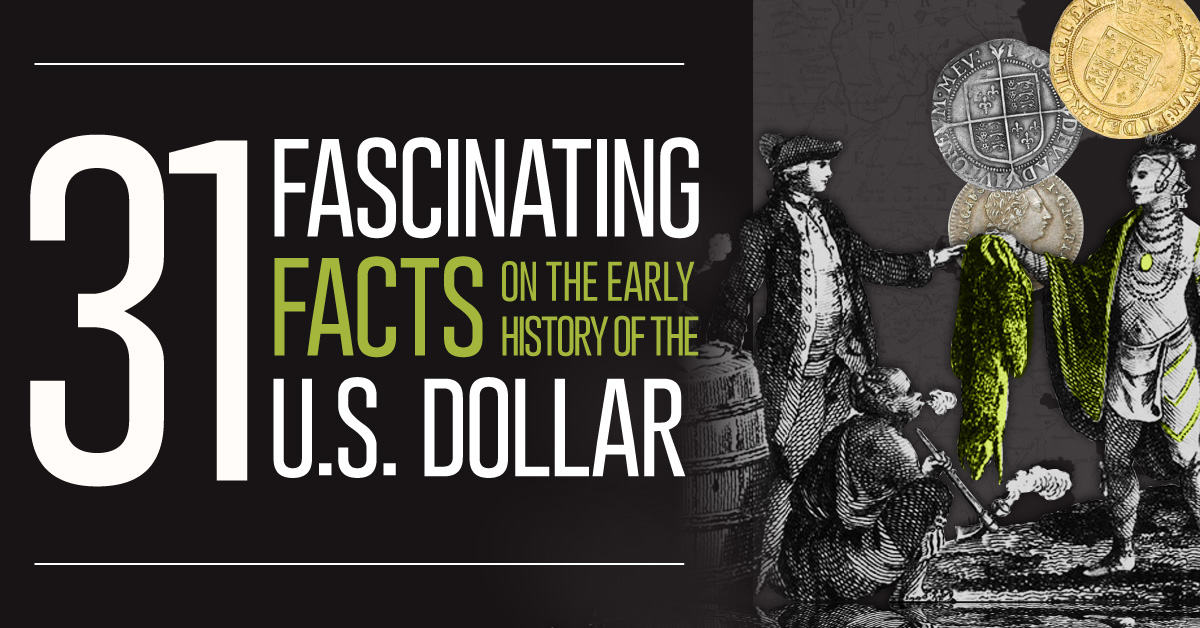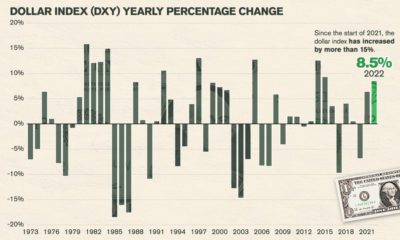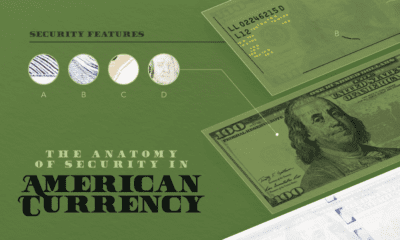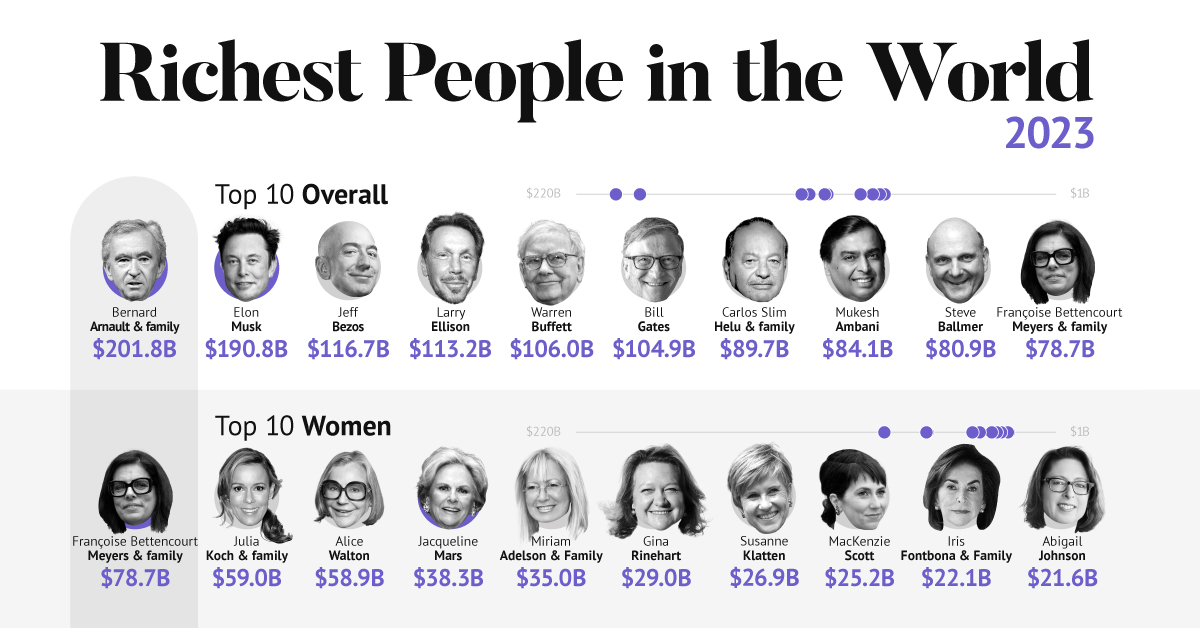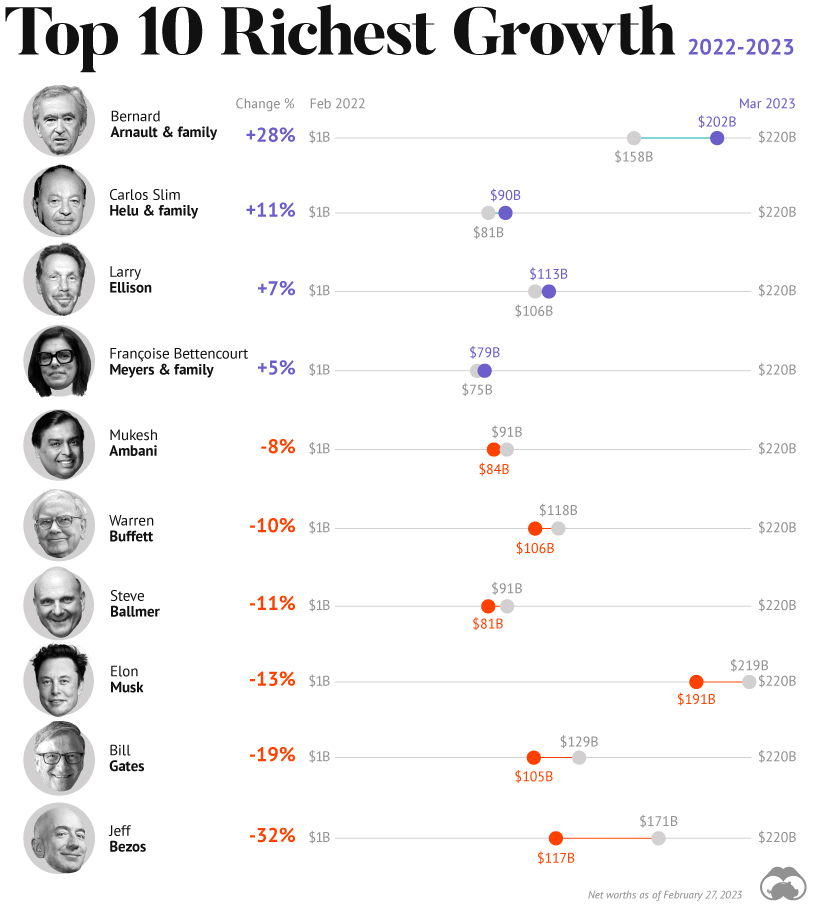Today, we all know the U.S. dollar as an iconic currency that is recognizable to people around the world. And while we’ve previously looked at the buying power of the U.S. dollar over time, as well as important events like the Great Depression, we have not looked at the history of the dollar itself. How and why was it conceived, and why do we call it a “dollar” or a “buck”? How did the dollar’s early history help to shape today’s world?
Before the Dollar
For the early colonists, currency was a bit of a free-for-all. Officially, cash was denominated in pounds, shillings, and pence, but in reality things were a different story. Cash was often scarce, and colonists needed to be innovative to fulfill transactions. At various points in time, they used tobacco, beaver skins, and wampum in the place of money. Some colonies even tried to issue their own fiat currencies – many of which went bust. As it turned out, the Spanish dollar was often the most abundant form of cash – and this is what led to U.S. currency eventually being denominated in dollars.
The Revolution
During the American Revolution in 1775, the Continental Congress issued a money known as the Continental Currency to try and fund the war. The government printed too many, and the value of a Continental diminished rapidly. Just five years later, after runaway inflation, the Continental was worth 2.5% of its face value. Benjamin Franklin rightly noted that the depreciation of the Continental had, in fact, acted as a tax to pay for the war. Holders of the currency – everyday people – were punished by losing massive amounts of buying power. Interestingly, this is where we get the phrase “Not worth a Continental”.
Birth of the Dollar
The failure of the Continental Currency must have been top of mind during the writing of the Constitution. A clause was even added, under Article 1, Section 10, to make sure such a failure would never happen again. It was written that states were not permitted to “coin Money; emit Bills of Credit; [or] make any Thing but gold and silver Coin a Tender in Payment of Debts.” And so, the Coinage Act of 1792 created the U.S. dollar as a standard unit of currency. The U.S. Mint was authorized to oversee coinage, and the Act also established a penalty of death for debasing coinage issued by the Mint.
The Almighty Buck
In the 19th Century, a new slang term emerged for the dollar. Especially in the Great Lakes area, different amounts of money were equated with animal skins. One particular reference showed that in Ohio in 1851, the skin of a muskrat was worth $0.25, and that of a doe was worth $0.50. Meanwhile, the skin of a buck was equal to the “almighty dollar” – and hence, the word “buck” became synonymous with the U.S. dollar.
The Civil War
Leading up to the Civil War, private banks around the country issued their own paper currencies. With 10,000 or so of these currencies in circulation as the war broke out, governments soon found it very cumbersome to try and pay debts with many different types of notes. As a result, the $10 Demand Note was the first official paper currency issued in 1861 by the government to help finance the war. The North began paying debts with a fiat currency called the “greenback”, while Confederate states issued their own paper currency as well. The latter was worthless by the time the Confederacy lost the war.
The Counterfeiting Problem
Around this time, counterfeiting was a widespread problem with greenbacks and all the private notes that were circulating. More than 1/3 of bills were fake at this time. Sophisticated counterfeit operations were happening in British Canada, and some bank engravers would even moonlight as counterfeiters, using the same plates and dyes they had from their day job. To deal with the problem, the Secret Service was formed in 1865.
The Modern Dollar
Counterfeiting measures have come a long way since the late 19th century. Today, it’s estimated that less than 0.01% of notes are fake. Learn more about the modern U.S. dollar in the next part of this series. The Money Project is an ongoing collaboration between Visual Capitalist and Texas Precious Metals that seeks to use intuitive visualizations to explore the origins, nature, and use of money.
on A lagging stock market dented these fortunes against high interest rates, energy shocks, and economic uncertainty. But some of the world’s billionaires have flourished in this environment, posting sky-high revenues in spite of inflationary pressures. With data from Forbes Real-Time Billionaires List, we feature a snapshot of the richest people in the world in 2023.
Luxury Mogul Takes Top Spot
The world’s richest person is France’s Bernard Arnault, the chief executive of LVMH.
With 75 brands, the luxury conglomerate owns Louis Vuitton, Christian Dior, and Tiffany. LVMH traces back to 1985, when Arnault cut his first major deal with the company by acquiring Christian Dior, a firm that was struggling with bankruptcy.
Fast-forward to today, and the company is seeing record profits despite challenging market conditions. Louis Vuitton, for instance, has doubled its sales in four years.
In the table below, we show the world’s 10 richest people with data as of February 27, 2023:
Elon Musk, the second-wealthiest person in the world has a net worth of $191 billion. In October, Musk took over Twitter in a $44 billion dollar deal, which has drawn criticism from investors. Many say it’s a distraction from Musk’s work with Tesla.
While Tesla shares have rebounded—after falling roughly 70% in 2022—Musk’s wealth still sits about 13% lower than in March of last year.
Third on the list is Jeff Bezos, followed by Larry Ellison. The latter of the two, who founded Oracle, owns 98% of the Hawaiian island of Lanai which he bought in 2012 for $300 million.
Fifth on the list is Warren Buffett. In his annual letter to shareholders, he discussed how Berkshire Hathaway reported record operating profits despite economic headwinds. The company outperformed the S&P 500 Index by about 22% in 2022.
How Fortunes Have Changed
Given multiple economic crosscurrents, billionaire wealth has diverged over the last year. Since March 2022, just four of the top 10 richest in the world have seen their wealth increase. Two of these are European magnates, while Carlos Slim Helu runs the largest telecom firm in Latin America. In fact, a decade ago Slim was the richest person on the planet. Overall, as the tech sector saw dismal returns over the year, the top 10 tech billionaires lost almost $500 billion in combined wealth.
Recent Shakeups in Asia
Perhaps the most striking news for the world’s richest centers around Gautam Adani, formerly the richest person in Asia. In January, Hindenburg Research, a short-selling firm, released a report claiming that the Adani Group engaged in stock manipulation and fraud. Specifically, the alleged the firm used offshore accounts to launder money, artificially boost share prices, and hide losses. The Adani Group, which owns India’s largest ports—along with ports in Australia, Sri Lanka, and Israel—lost $100 billion in value in the span of a few weeks. Interestingly, very few Indian mutual funds hold significant shares in Adani Group, signaling a lack of confidence across India’s market, which was also cited in Hindenburg’s report. As a result, Mukesh Ambani has climbed to Asia’s top spot, controlling a $84 billion empire that spans from oil and gas and renewable energy to telecom. His conglomerate, Reliance Industries is the largest company by market cap in India.


